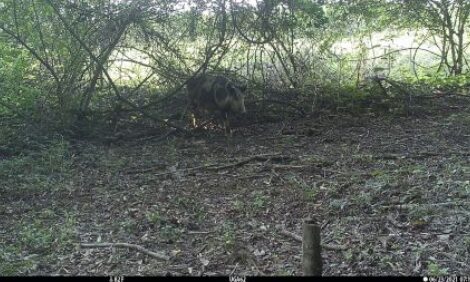



Gilt Management: Integration on Outdoor Units
Tips on managing gilts in outdoor systems from BPEX - no. 34 in the 'Action for Productivity' series.Good management and integration of gilts is fundamental for maintaining a productive herd. At any time, 20 to 25 per cent of production should be from gilts.
A typical 45 per cent replacement rate means that nearly half the herd will have been replaced during the year. Performance from, and management of, this parity therefore has a large impact on overall productivity and profitability.
Targets
- minimise stress experienced by incoming gilts
- maximise the number of gilts achieving puberty
- target a body condition score (BCS) of 3 to 3.5 at first service
Many gilts arriving on outdoor units will have come from indoor systems. This change in environment can create problems, if not managed well, during the acclimatisation period. Training paddocks and acclimatisation areas often double up in outdoor scenarios. Remember, incoming gilts should be isolated for at least four weeks (depending on health status) to avoid a health breakdown.
Management Guidelines
Group size
- Consider and optimise group size to encourage good feed and water intake
- Lying space is critical for young gilts so check the type of hut used suits the group size
Example hut sizes and stocking densities
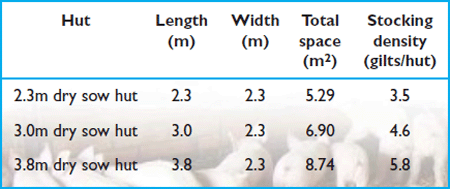
Feeding
- Check with the gilt supplier what feed type was fed and how
- If gilts are not used to them, it will take a few days to adjust to large sow rolls and rota feeders; wait by the paddock and ensure all gilts find the feed
- Manage feed faces for gilt paddocks so feed is presented well
- Outdoor gilts need roughly 25 per cent more feed than indoor gilts. Check your feed levels and strategies with your feed supplier and make sure all staff are aware of the gilt requirements
- Target a body condition score (BCS) of 3.0 to 3.5 at first service
- Monitor gilt condition from delivery to service and adjust feed levels to achieve this target.
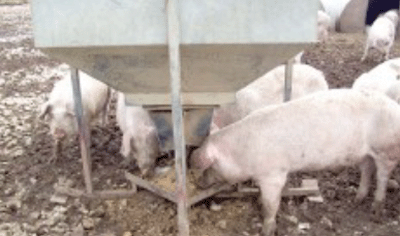
Weather
- It is common for gilts to become sunburnt after their first exposure to sun
- Provision for sun protection, such as shades, pre-made wallows and straw day beds, is critical, especially in the first days on the unit. Make sure these are in place before gilts arrive
- Sunburn and heat stress can quickly cause skin problems, decrease feed intake, discomfort and even death
- During winter, gilts delivered onto the unit will need extra warmth. Ensure huts have no holes or damaged vents
- Ample straw provision and well-sited huts will aid drainage and protect gilts from winter winds.
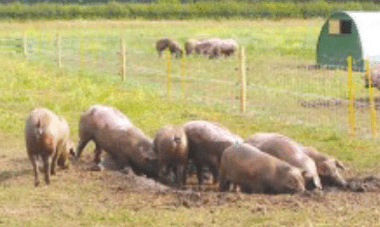
Health
- The worming programme for incoming outdoor gilts should be discussed with your vet. It is a very important part of the introduction of gilts but the way in which the wormer administration is timed is critical to achieving successful results.
Gilt Replacement Strategies
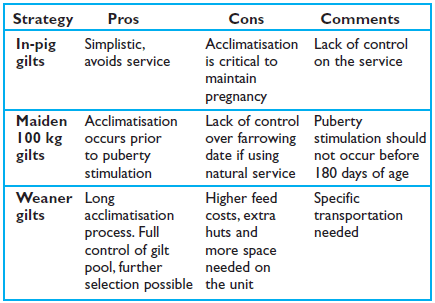
Whether you are bringing in in-pig, maiden or weaner gilts, acclimatisation is the most essential part of any integration strategy. Some units will use natural service while others will use AI, or a combination of both, depending on individual preference. Gilts are then artificially inseminated on the second parity.
Maiden gilts
- Aim to provide an environment that:
- supports and maintains healthy gilts
- does not expose gilts to mycotoxins
- does not compromise growth
- Record any natural services that are observed in the paddocks to enable you to plan farrowing dates
- If batch farrowing your sow herd, plan when the boars are moved in with the gilts so as many as possible farrow earlier in the batch to give them as long a lactation period as possible
- Keep boar to gilt ratio at 1:2 wherever possible
- Rotate boars twice a week unless activity levels look high, if this is the case consider more regular rotation.
Farrowing paddocks
- Many units now adopt individual farrowing paddocks for gilts regardless of whether this is the system for the sow farrowings
- Doubling up is common among gilts and individual farrowing paddocks can minimise this happening
- If a natural service system is in place for gilts, farrowing times can be varied so each gilt can be fed as an individual; if gilts were together and there was a range of farrowing times, getting the correct feed curve for each gilt would be impossible
- Condition at weaning is critical to avoid second litter drop.
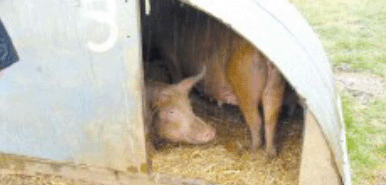
The final stage of integration is mixing the farrowed gilts in with the main herd after weaning. Provide at least two huts in any dry sow paddock to enable submissive gilts to lie away from the main group. Also, ensure the feed face is wide enough for sows and gilts to feed easily.
June 2013






